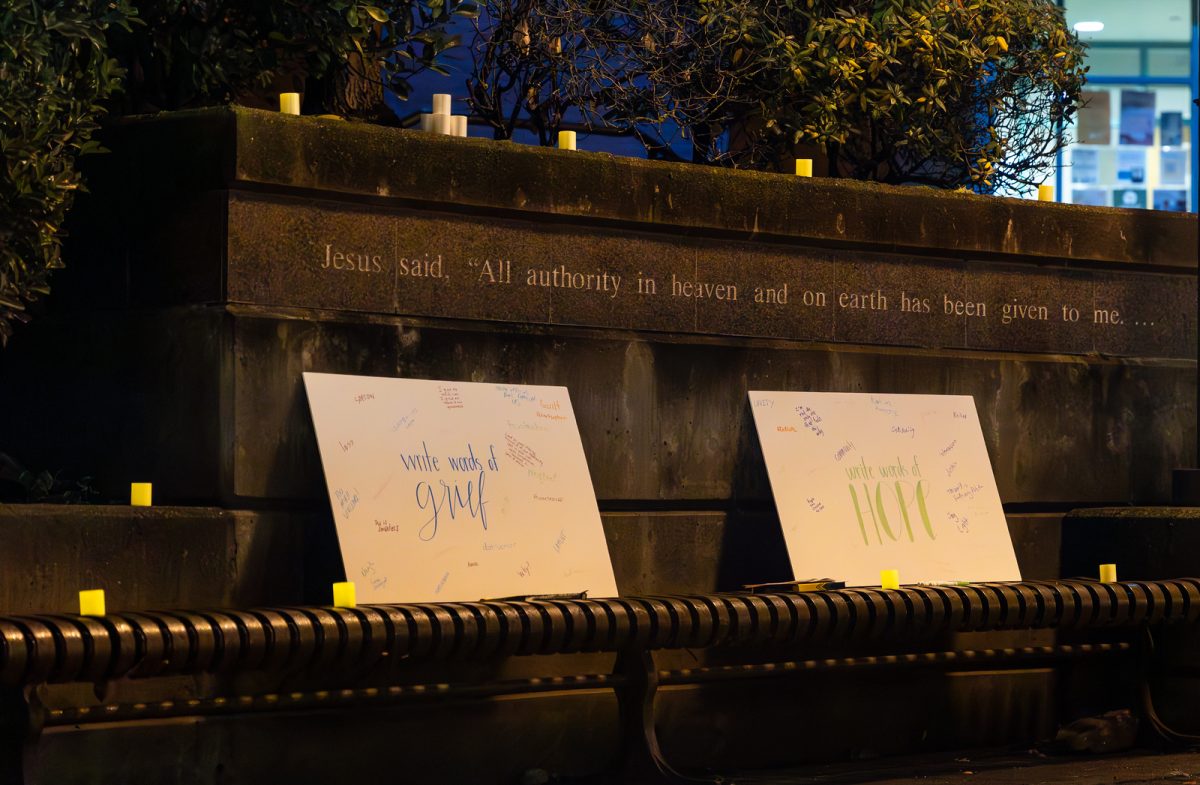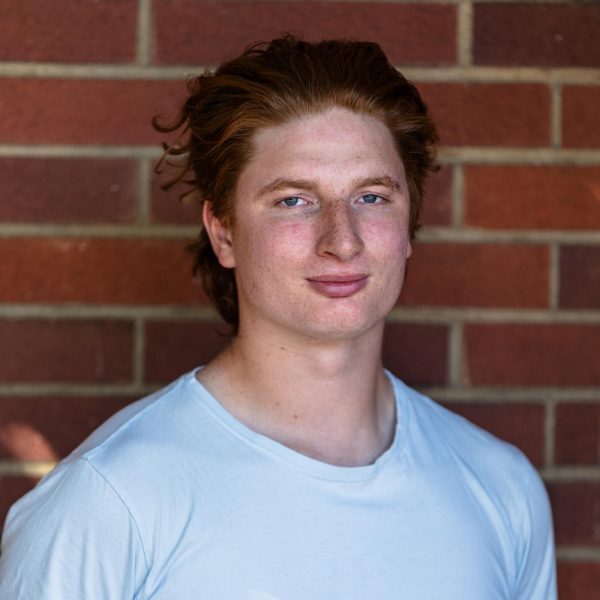
On Tuesday, Nov. 7, a group of Seattle Pacific University students held a candlelight vigil in Martin Square in honor of all the lives lost in Gaza and Israel.
On Oct. 7, one month before the vigil, the decade-long Israeli military occupation of Palestine came to a head when Hamas, a Palestinian militant group, launched an attack on Israel. Since then, Israeli military forces have advanced on the territory. According to the latest reports by the United Nations Office for the Coordination of Humanitarian Affairs, as of Nov. 10, the death toll has reached a total of 11,078 Palestinians, 4,506 of whom are said to be children and 1,200 Israeli and foreign national deaths.
Students, faculty and staff alike gathered in thoughtful prayer and silent remembrance of those who have died. Standing side by side, candles lit the arched bench of Martin Square, illuminating posters prompting students to write out feelings of grief and hope.
The event came from a common sentiment that students lack the space to properly grieve and feel all the emotions surrounding the deaths and atrocities. During a panel discussion on misinformation in the media, held on Oct. 20, there was a consensus that students needed an intentional place to gather in grief.
Sophomore social justice and cultural studies, linguistics and honors triple major Erin Hallquist agreed with the sentiment. They decided with a group of students to create and intentionally hold space for the whole SPU community to feel together.
“The whole thing came down to, you need to make time, you need to make space to have those conversations and to feel those feelings,” Hallquist said.
Esther Mutesi, senior physics and honors double major, who attended the panel on media misinformation, has experienced a difference in the cultural norms around grieving than that of her home in the Democratic Republic of the Congo. American society can oftentimes expect grieving to be done in solitude, according to Mutesi, but grief, as it derives from love, can often bring people together.
“In my culture, we don’t grieve alone. Even at the vigil, it was interesting to see everyone standing alone, but I believe it [grieving] should be done in the community and in a lot of ways,” Mutesi said. “Eventually, people came to talk with me; it removed a burden off my heart and I realized I wasn’t alone.”
Throughout the night, students and faculty filtered in and out to pay their respects, mourn and feel. Some bowed their heads in prayer while others engaged in hushed conversations of shared lament. Two organizers led the group in song and prayer as people hugged and wept.
Mutesi, like many students, came not knowing what to expect but needing a place to process.
“I was overwhelmed, I was tired, I was in pain; I wanted that time to not feel like the world was moving, to be present and to honor those who have passed,” Mutesi said.
Madalynn Stark, junior social justice major and an organizer of the event, has found it difficult to process the tragedies of the world. Stark commented on how the rate at which news travels can paralyze students from action or feeling.
“I definitely feel like I haven’t been taught how to be sad,” Stark said. “There is no space to feel the weight of the world. I feel like with more media our generation [is exposed to], that we can see so much more than generations before us have seen.”
Among organizers and students who attended, it was clear that the vigil was not the end of campus or personal activism. There are many actions students can take, such as writing letters to government officials, protesting or simply educating themselves.
However, to take action and create a better world, all must first feel emotions in their human glory.
Stark quoted a friend who spoke with her after the event whose message summed up her feelings: “We can’t expect to help anything or make things better or change the world if we don’t first feel the sadness of it.”

















































































